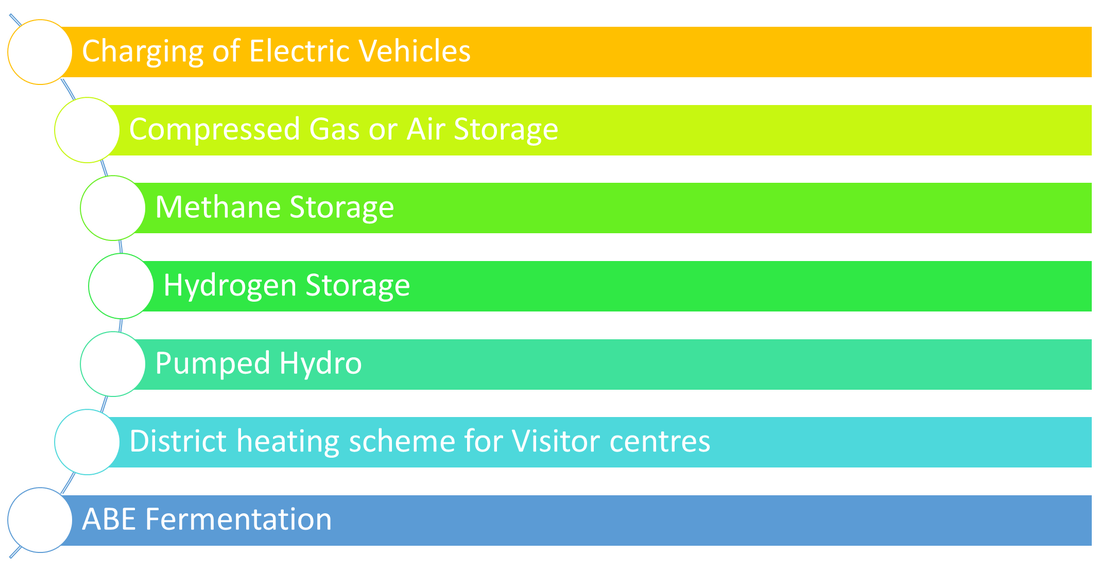Given the results obtained in our studies, we believe that there is a potential for integrated large scale energy storage generated from renewable sources. We believe that further study into the topic will provide a broader understanding of the challenges involved. We recommend expanding the project to include multiple years worth of data, which would allow predictions for maximum, minimum and the average output which can be expected. This data would then allow the storage systems to be further optimised- ensuring the surplus energy is effectively utilised. As the battery designs are relatively new, further analysis through the life cycle would allow a better understanding of how efficiency and self-discharge rates will effect performance characteristics. As expected, the costs involved will also reduce as technologies mature, thus potentially making these systems economically viable on a smaller scale. Smaller, home-scale applications could be investigated in order to provide a renewable and reliable means of charging electric vehicles.
A number of storage methods were considered, however, it was not possible to extensively research all which were uncovered. It would be beneficial to investigate these further:
A number of storage methods were considered, however, it was not possible to extensively research all which were uncovered. It would be beneficial to investigate these further:
- A comparison of compressed air storage vs batteries and biofuels
- Investigate other power to gas techniques (Methane, Hydrogen etc) and compare the effectiveness and feasibility of each
- Assess the viability of integrating pumped hydro techniques with other renewable sources
- Utilising waste heat from conversion processes in district heating schemes
- Using butanol as a biofuel through ABE fermentation
References:
Background heading: http://www.blue-castle.co.uk/blog/aware-environmental-impact/
Background heading: http://www.blue-castle.co.uk/blog/aware-environmental-impact/
